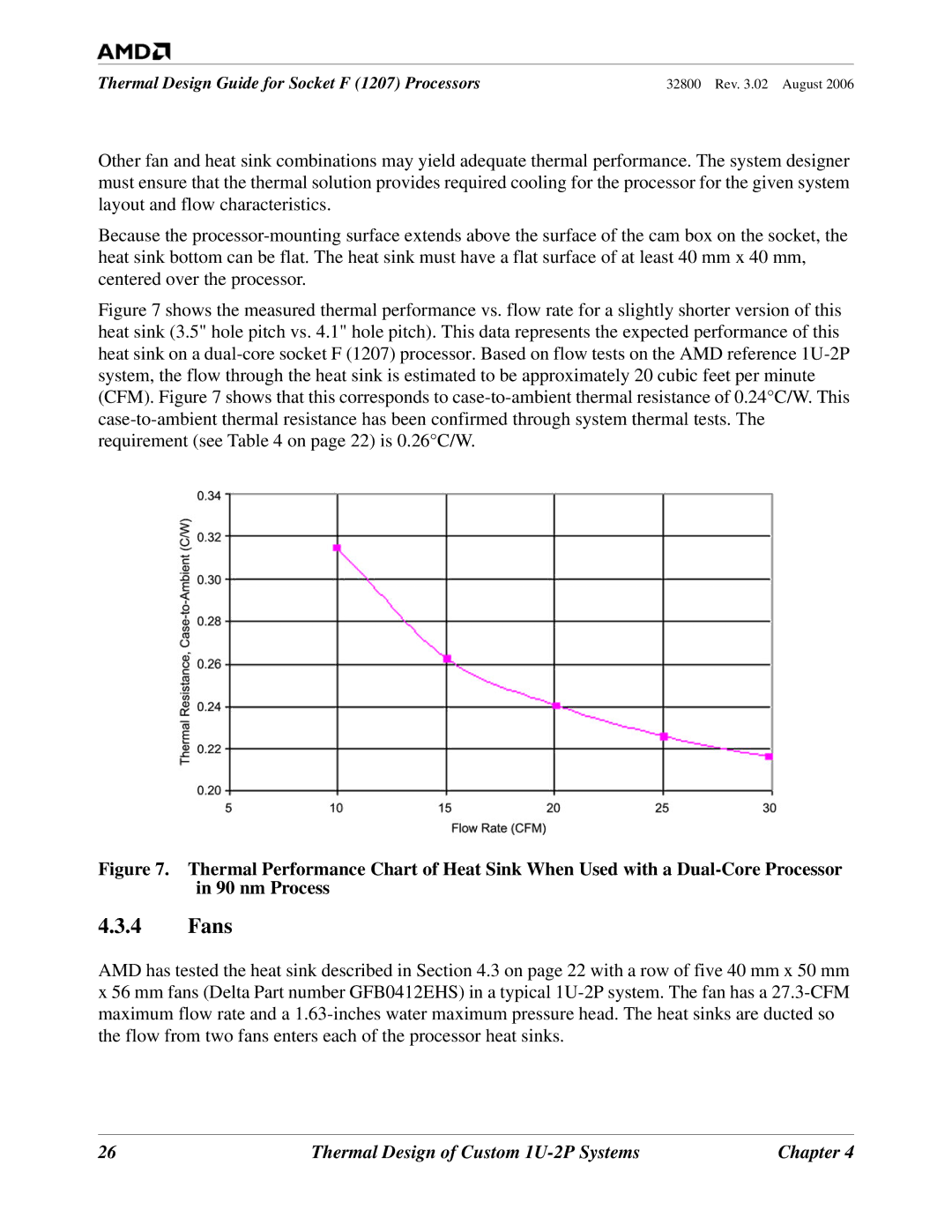
Thermal Design Guide for Socket F (1207) Processors | 32800 Rev. 3.02 August 2006 |
Other fan and heat sink combinations may yield adequate thermal performance. The system designer must ensure that the thermal solution provides required cooling for the processor for the given system layout and flow characteristics.
Because the
Figure 7 shows the measured thermal performance vs. flow rate for a slightly shorter version of this heat sink (3.5" hole pitch vs. 4.1" hole pitch). This data represents the expected performance of this heat sink on a dual-core socket F (1207) processor. Based on flow tests on the AMD reference 1U-2P system, the flow through the heat sink is estimated to be approximately 20 cubic feet per minute (CFM). Figure 7 shows that this corresponds to case-to-ambient thermal resistance of 0.24°C/W. This case-to-ambient thermal resistance has been confirmed through system thermal tests. The requirement (see Table 4 on page 22) is 0.26°C/W.
Figure 7. Thermal Performance Chart of Heat Sink When Used with a Dual-Core Processor in 90 nm Process
4.3.4Fans
AMD has tested the heat sink described in Section 4.3 on page 22 with a row of five 40 mm x 50 mm x 56 mm fans (Delta Part number GFB0412EHS) in a typical
26 | Thermal Design of Custom | Chapter 4 |
